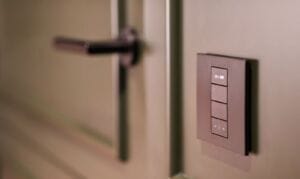The scorching sun can be a blessing and a curse. While it provides warmth and bright skies for much of the year, it also subjects homes to intense UV radiation.
An Environmental Protection Agency (EPA) article states that almost 100% of UV rays pass through when the sky is clear. Scattered clouds allow 89%, broken clouds transmit 73%, and overcast skies allow 31%. This relentless exposure can take a toll on your roof, leading to premature deterioration and costly repairs.
In this article, we’ll explore the effects of UV radiation on roofs and discuss strategies to protect your home from sun damage.
Effects of UV Radiation on Roofing Materials
Intense sunlight exposes roofs to high levels of UV radiation, which can have several detrimental effects on roofing materials. According to Architectural Digest, some of the most common materials have a lifespan of 20 to more than 100 years.
However, exposure to UV rays can reduce their life and result in additional maintenance costs. Let’s understand the effects of UV rays on the various roofing materials.
- Asphalt shingles: Asphalt shingles, commonly used in residential roofing, are particularly susceptible to UV damage. Over time, UV radiation causes the asphalt to degrade, leading to cracks, curling, and loss of granules. This deterioration can compromise the roof’s integrity and increase the risk of leaks.
- Wood shingles and shakes: Wood shingles and shakes can also suffer from UV damage. Prolonged exposure to sunlight can cause the wood to dry out and become brittle, leading to splitting, warping, and decay. Additionally, UV radiation can fade the wood’s natural color, diminishing the roof’s aesthetic appeal.
- Metal roofing: While metal roofing is more resistant to UV damage than other materials, prolonged exposure can still cause issues. UV radiation can cause the metal to expand and contract, leading to loosening of fasteners and potential leaks. Additionally, UV exposure can cause the paint or coating on the metal surface to degrade, requiring recoating or repainting to maintain protection.
Protecting Your Roof from UV Radiation
Despite the harsh sun, there are several steps homeowners can take to protect their roofs from UV damage:
Apply a Reflective Coating
Applying a reflective coating to your roof can help reduce the UV radiation the roofing material absorbs. Reflective coatings, such as white or light-colored paints, bounce sunlight away from the roof surface.
Cool roof coatings can keep the home cooler and minimize heat transfer to the interior. They are also available for reflecting heat, especially during summer. A Grand View Research market study shows that the global cool roof coatings market grew to $4.03 billion in 2022. It is estimated to grow at a compound annual growth rate of 7.2% from 2023 to 2030.
There are many options available. According to FoamCo Roofing Company, elastomeric roof coatings can be extremely useful in hot climates. Similarly, silicone roof coatings are also an ideal choice. Both of these are a type of spray foam roofing coatings. They offer great reflectivity and UV resistance to protect your roof and increase its life.
You can hire a spray foam roofing company to apply the coat to your roof. The company will have all the tools and expertise for the right application. Spray foam is sprayed and applied directly on the roof substrate in a liquid form.
Choose UV-Resistant Materials
Protecting your roof from UV radiation is essential for maintaining its longevity and structural integrity. One effective way to achieve this is by choosing UV-resistant materials during the construction or renovation of your roof. UV-resistant materials are designed to withstand prolonged exposure to sunlight without deteriorating or losing their functionality.
One commonly used UV-resistant roofing material is UV-resistant roofing membranes. These membranes are typically made from synthetic materials, such as PVC or TPO, formulated to resist UV damage. They are highly durable and can effectively shield the underlying roofing structure from the harmful effects of UV radiation.
Another option for UV protection is UV-resistant roof coatings. These coatings are applied directly onto the roof’s surface, forming a protective barrier against UV rays. They are available in various formulations, including acrylic, silicone, and elastomeric coatings, each offering different levels of UV resistance and durability.
Metal roofing materials are also known for their UV resistance. Metal roofs are typically coated with reflective finishes that help to deflect sunlight and reduce heat absorption. Additionally, metal roofs are inherently durable and can withstand exposure to UV radiation without experiencing significant degradation.
Provide Adequate Ventilation
When a roof lacks proper ventilation, heat can become trapped in the attic, causing temperatures to soar. This excessive heat increases energy costs by making it harder to cool the home and accelerates the breakdown of roofing materials. For instance, asphalt shingles are brittle and prone to cracking when exposed to high temperatures for an extended period of time.
In addition to heat buildup, inadequate ventilation can lead to moisture problems. Condensation can form in the attic when warm, moist air from inside the home meets the cooler air in the attic space. This moisture can promote the growth of mold and mildew, which can further degrade roofing materials and compromise indoor air quality.
Proper ventilation allows air exchange within the attic, helping regulate temperature and humidity levels. This can extend the roof’s lifespan by reducing the stress on roofing materials and preventing moisture-related damage.
Common ventilation solutions include ridge vents, soffit vents, and attic fans, creating continuous airflow throughout the attic space. As Bob Vila states, most home experts say that one sq. ft. of ventilation is desirable for every 300 sq. ft. of attic.
Conduct Regular Inspections and Maintenance
Conducting routine inspections allows you to identify any signs of damage early on, enabling prompt repairs to prevent further deterioration.
During inspections, carefully examine the condition of your roof, paying close attention to areas that are most exposed to sunlight. Look for signs of wear and tear, such as cracks, blistering, or peeling of the roofing materials. Check for loose or missing shingles, as they can create vulnerabilities that allow UV radiation to penetrate the underlying layers of the roof.
In addition to visual inspections, regular maintenance tasks are important to prolong the lifespan of your roof. Clean debris such as leaves, branches, and dirt from the roof’s surface, as they can trap moisture and accelerate UV-induced damage. Clearing debris also allows for better ventilation, which helps regulate temperature and reduce heat buildup on the roof.
Frequently Asked Questions
Does the Rooftop Block UV Rays?
While roofs provide some protection from UV rays, not all materials offer equal resistance. Some materials, such as asphalt shingles, can absorb UV radiation, potentially leading to degradation over time. However, other roofing materials, like metal or tiles, may offer better UV protection, depending on their composition and color.
What Color Blocks UV Rays?
Lighter colors reflect more sunlight, including UV radiation, than darker hues. White or light-colored roofs are often recommended for their ability to reflect sunlight and reduce heat absorption, which can help mitigate the effects of UV exposure. Therefore, choosing a lighter-colored roof can improve UV protection and extend lifespan.
What Natural Material Blocks UV Rays?
Certain natural materials used in roofing, such as clay or slate tiles, can provide effective UV protection. These materials have inherent properties that make them durable and resistant to UV degradation. Additionally, natural materials often have built-in pigments or structures that help deflect UV radiation, enhancing their ability to protect the underlying structure.
To conclude, protecting your roof from UV radiation is essential for maintaining the integrity and longevity of your home’s roofing system. By understanding the effects of UV radiation and implementing preventive measures, homeowners can minimize sun damage and preserve the beauty and functionality of their roofs.
From choosing UV-resistant materials to applying reflective coatings and conducting regular maintenance, proactive steps can help safeguard your roof against the relentless sun.




